
Gerbrand van den Eeckhout Painting Reproductions 1 of 1
1621-1674
Dutch Baroque Painter
Gerbrand van den Eeckhout (August 19, 1621 - October 22, 1674), was a Dutch painter of the Dutch Golden Age and a favourite student of Rembrandt.
He was born in Amsterdam as the son of a jeweller, a Mennonite who fled after 1585 from Antwerp to the north. His father's second wife was the daughter of a founder of the Delft chamber of the Dutch East India Company. Eeckhout, unmarried, was also appreciated as art connoisseur, and dealing with poets and scientists. At the end of his life he was living with his sister-in-law, a widow, on Herengracht, at a very prestigious part of the canal.
A fellow pupil to Ferdinand Bol, Nicolaes Maes and Govert Flinck, it is not sure he must be regarded as inferior to them in skill and experience; he soon assumed Rembrandt's manner with such success that his pictures were confused with those of his master; and, even in modern days, the Resurrection of the Daughter of Jairus, in the Berlin museum, and the Presentation in the Temple, in the Dresden gallery, have been held to represent worthily the style of Rembrandt.
Evidence of Eeckhout's success in imitation is clear in his Presentation in the Temple, at Berlin, which was executed after Rembrandt's print of 1630, and his Tobit with the Angel, at Brunswick, composed on the same background as Rembrandt's Philosopher in Thought. Eeckhout does not merely copy the subjects; he also takes the shapes, the figures, the Jewish dress and the pictorial effects of his master. It is difficult to form an exact judgment of Eeckhout's qualities at the outset of his career. His earliest pieces are probably those in which he more faithfully reproduced Rembrandt's peculiarities. Exclusively his is a tinge of green in shadows marring the harmony of the work, a gaudiness of jarring tints, uniform surface and a touch more quick than subtle.
Besides the pictures already mentioned are classed the Woman taken in Adultery, at Amsterdam; Anna presenting her Son to the High Priest, in the Louvre; the Epiphany, at Turin; and the Circumcision, at Cassel. Eeckhout matriculated early in the Gild of Amsterdam. A likeness of a lady at a dressingtable with a string of beads, at Vienna, bears the date of 1643, and proves that the master at this time possessed more imitative skill than genuine mastery over nature.
As he grew older Eeckhout succeeded best in portraits, for example that of the historian Olfert Dapper (1669), in the Stadel collection. Eeckhout occasionally varied his style so as to recall in later years the "small masters" of the Dutch school. Waagen justly drawing attention to his following of Gerard ter Borch in Gambling Soldiers, at Stafford House, and a Soldiers' Merrymaking, in the collection of the marquess of Bute. A Sportsman with Hounds, probably executed in 1670, now in the Van der Hoo gallery, and a Group of Children with Goats (1671), in the Hermitage, hardly exhibit a trace of the artist's first education. Amongst the best of Eeckhout's works are Christ in the Temple (1662), at Munich, and the Haman and Mordecai of 1665, at Luton House.
He was born in Amsterdam as the son of a jeweller, a Mennonite who fled after 1585 from Antwerp to the north. His father's second wife was the daughter of a founder of the Delft chamber of the Dutch East India Company. Eeckhout, unmarried, was also appreciated as art connoisseur, and dealing with poets and scientists. At the end of his life he was living with his sister-in-law, a widow, on Herengracht, at a very prestigious part of the canal.
A fellow pupil to Ferdinand Bol, Nicolaes Maes and Govert Flinck, it is not sure he must be regarded as inferior to them in skill and experience; he soon assumed Rembrandt's manner with such success that his pictures were confused with those of his master; and, even in modern days, the Resurrection of the Daughter of Jairus, in the Berlin museum, and the Presentation in the Temple, in the Dresden gallery, have been held to represent worthily the style of Rembrandt.
Evidence of Eeckhout's success in imitation is clear in his Presentation in the Temple, at Berlin, which was executed after Rembrandt's print of 1630, and his Tobit with the Angel, at Brunswick, composed on the same background as Rembrandt's Philosopher in Thought. Eeckhout does not merely copy the subjects; he also takes the shapes, the figures, the Jewish dress and the pictorial effects of his master. It is difficult to form an exact judgment of Eeckhout's qualities at the outset of his career. His earliest pieces are probably those in which he more faithfully reproduced Rembrandt's peculiarities. Exclusively his is a tinge of green in shadows marring the harmony of the work, a gaudiness of jarring tints, uniform surface and a touch more quick than subtle.
Besides the pictures already mentioned are classed the Woman taken in Adultery, at Amsterdam; Anna presenting her Son to the High Priest, in the Louvre; the Epiphany, at Turin; and the Circumcision, at Cassel. Eeckhout matriculated early in the Gild of Amsterdam. A likeness of a lady at a dressingtable with a string of beads, at Vienna, bears the date of 1643, and proves that the master at this time possessed more imitative skill than genuine mastery over nature.
As he grew older Eeckhout succeeded best in portraits, for example that of the historian Olfert Dapper (1669), in the Stadel collection. Eeckhout occasionally varied his style so as to recall in later years the "small masters" of the Dutch school. Waagen justly drawing attention to his following of Gerard ter Borch in Gambling Soldiers, at Stafford House, and a Soldiers' Merrymaking, in the collection of the marquess of Bute. A Sportsman with Hounds, probably executed in 1670, now in the Van der Hoo gallery, and a Group of Children with Goats (1671), in the Hermitage, hardly exhibit a trace of the artist's first education. Amongst the best of Eeckhout's works are Christ in the Temple (1662), at Munich, and the Haman and Mordecai of 1665, at Luton House.
6 Gerbrand van den Eeckhout Paintings
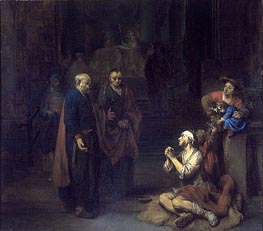
St. Peter Healing the Lame 1667
Oil Painting
$1989
$1989
Canvas Print
$54.83
$54.83
SKU: EEG-6834
Gerbrand van den Eeckhout
Original Size: 62.5 x 69.5 cm
Fine Arts Museums of San Francisco, California, USA
Gerbrand van den Eeckhout
Original Size: 62.5 x 69.5 cm
Fine Arts Museums of San Francisco, California, USA
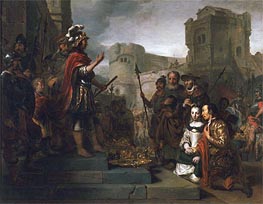
The Continence of Scipio 1659
Oil Painting
$3578
$3578
Canvas Print
$48.01
$48.01
SKU: EEG-6835
Gerbrand van den Eeckhout
Original Size: 132.1 x 170.2 cm
Philadelphia Museum of Art, Pennsylvania, USA
Gerbrand van den Eeckhout
Original Size: 132.1 x 170.2 cm
Philadelphia Museum of Art, Pennsylvania, USA
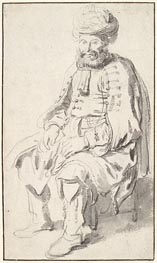
A Seated Man in Middle Eastern Costume 1646
Paper Art Print
$45.72
$45.72
SKU: EEG-6836
Gerbrand van den Eeckhout
Original Size: 23.1 x 13.5 cm
Fogg Art Museum at Harvard University, Massachusetts, USA
Gerbrand van den Eeckhout
Original Size: 23.1 x 13.5 cm
Fogg Art Museum at Harvard University, Massachusetts, USA
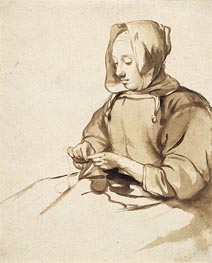
Woman Doing Handwork c.1655
Paper Art Print
$45.72
$45.72
SKU: EEG-6837
Gerbrand van den Eeckhout
Original Size: 18 x 14.7 cm
Fogg Art Museum at Harvard University, Massachusetts, USA
Gerbrand van den Eeckhout
Original Size: 18 x 14.7 cm
Fogg Art Museum at Harvard University, Massachusetts, USA
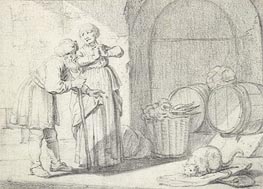
Genre Scene with a Man a Woman and a Cat n.d.
Paper Art Print
$45.72
$45.72
SKU: EEG-6838
Gerbrand van den Eeckhout
Original Size: 9.6 x 13.2 cm
Fogg Art Museum at Harvard University, Massachusetts, USA
Gerbrand van den Eeckhout
Original Size: 9.6 x 13.2 cm
Fogg Art Museum at Harvard University, Massachusetts, USA
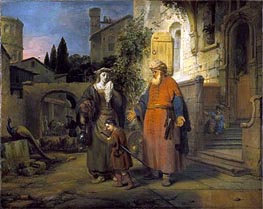
The Expulsion of Hagar and Ishmael 1666
Oil Painting
$1917
$1917
SKU: EEG-12044
Gerbrand van den Eeckhout
Original Size: 55.2 x 68.9 cm
North Carolina Museum of Art, Raleigh, USA
Gerbrand van den Eeckhout
Original Size: 55.2 x 68.9 cm
North Carolina Museum of Art, Raleigh, USA